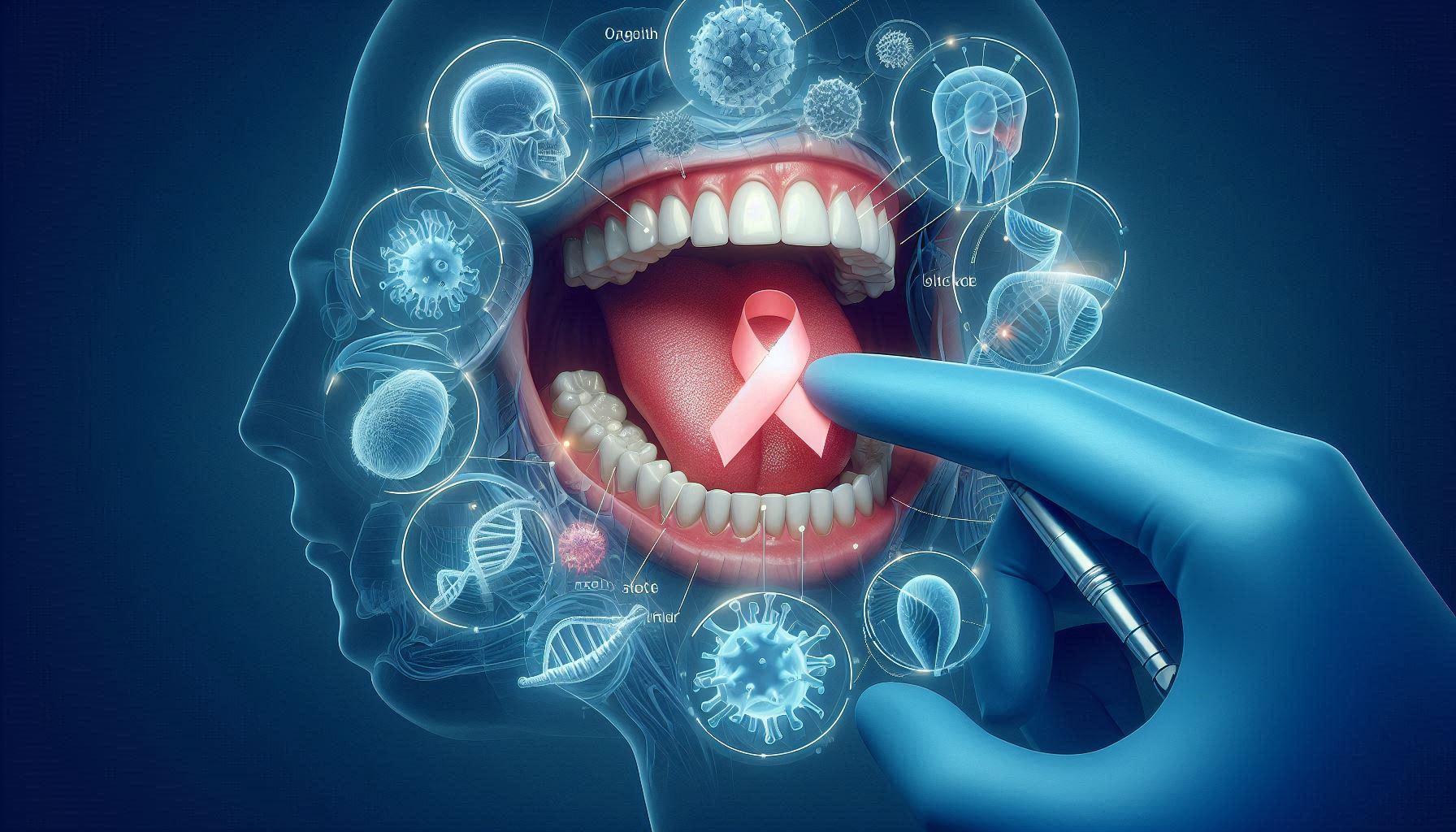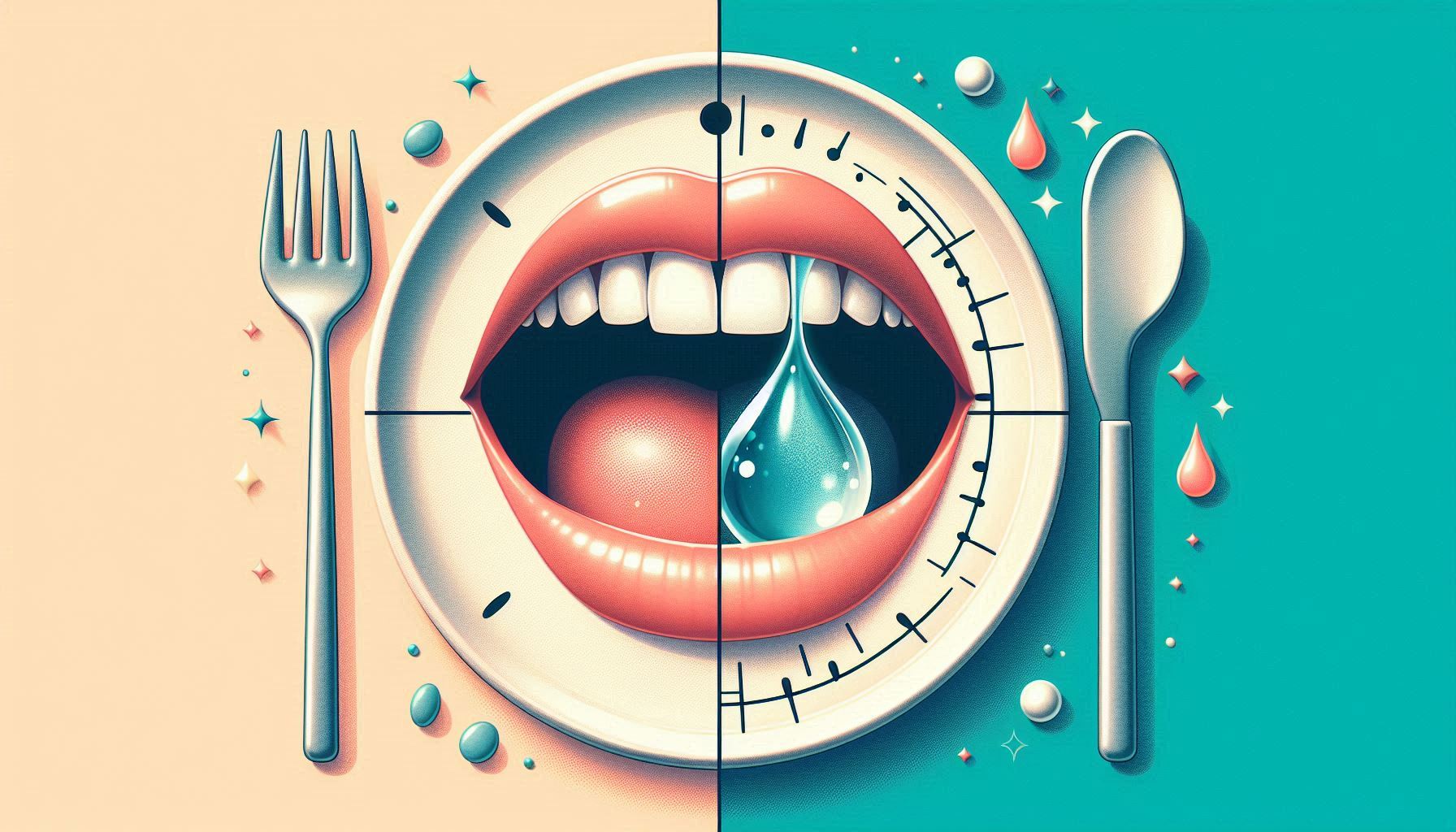Introduction to Oral Cancer
Oral cancer, also known as mouth cancer, refers to the development of cancer in any part of the oral cavity, including the lips, tongue, cheeks, floor of the mouth, hard and soft palates, sinuses, and throat. According to the American Cancer Society, oral cancer accounts for approximately 3% of all cancers in the United States. Despite its relatively small percentage, it remains a significant health concern worldwide due to its potential for local invasion and metastasis, which can severely impact quality of life.
The importance of understanding oral cancer lies in the fact that it often goes undiagnosed until it reaches advanced stages, making it more difficult to treat effectively. In this article, we will explore the causes, risk factors, symptoms, diagnostic methods, prevention strategies, and treatment options associated with oral cancer. Furthermore, we will discuss the importance of early detection and the role that awareness plays in saving lives.
Anatomy of the Oral Cavity and Risk Zones
The oral cavity consists of several structures that play critical roles in daily functions such as speaking, chewing, and swallowing. Understanding the anatomy of the mouth is essential for understanding where oral cancers can develop and which parts of the oral cavity are more vulnerable.
- Lips: The lips form the boundary of the oral cavity and can be affected by oral cancer, often from sun exposure leading to squamous cell carcinoma.
- Tongue: The tongue is divided into two parts—the oral part (front two-thirds) and the base (back one-third). The base of the tongue is more prone to developing cancers due to its location in the throat.
- Cheeks: The inner lining of the cheeks, known as the buccal mucosa, can develop cancer due to irritants like tobacco use.
- Palate: Both the hard and soft palates are susceptible to cancer, although less frequently than other regions.
- Floor of the Mouth: This is a highly vascular area where cancers may develop, particularly under the influence of smoking and alcohol consumption.
- Salivary Glands: Though relatively uncommon, cancers can arise in the major and minor salivary glands within the oral cavity.
- Throat (Oropharynx): The back of the mouth, including the tonsils, soft palate, and the walls of the pharynx, is also at risk of developing cancer.
Each of these areas can be affected by different forms of oral cancer, with squamous cell carcinoma being the most common type found in the mouth.
Causes and Risk Factors for Oral Cancer
Oral cancer can develop due to a variety of genetic, environmental, and lifestyle factors. While the precise cause of oral cancer remains unclear, several key risk factors have been identified that significantly increase the likelihood of developing this disease. These include:
- Tobacco Use (Smoking and Chewing): Smoking is the single largest risk factor for oral cancer. It is associated with cancers of the lips, tongue, gums, and palate. Additionally, smokeless tobacco products like chewing tobacco and snuff have been linked to cancers of the cheek, gum, and mouth. Tobacco contains carcinogens that damage the DNA in oral cells, leading to the formation of cancerous growths.
- Alcohol Consumption: Excessive alcohol consumption, particularly when combined with tobacco use, significantly increases the risk of oral cancer. Alcohol acts as a solvent, allowing carcinogenic substances in tobacco smoke to penetrate the tissues of the mouth more effectively. Studies have shown that people who drink and smoke together are at a higher risk of developing oral cancer than those who engage in only one of these habits.
- Human Papillomavirus (HPV): HPV, a sexually transmitted virus, has been linked to cancers of the oropharynx, including the tonsils and base of the tongue. HPV-positive oral cancers tend to affect younger individuals who may have less exposure to traditional risk factors like smoking and alcohol. The virus can cause changes to the DNA of oral cells, leading to uncontrolled cell growth and cancer.
- Poor Oral Hygiene: Chronic gum disease (periodontal disease), untreated dental issues, and lack of proper oral hygiene are risk factors for oral cancer. Inflammation caused by gum disease may contribute to the development of oral cancers by allowing carcinogens to infiltrate the mouth more easily.
- Diet and Nutrition: A diet low in fruits and vegetables may increase the risk of oral cancer due to deficiencies in essential vitamins and minerals, such as vitamin A and folate, that help protect the cells in the mouth from carcinogenic damage. Additionally, excessive consumption of red meat, processed foods, and salted foods may contribute to oral cancer development.
- Age and Gender: Oral cancer is more common in older adults, particularly those over the age of 50. The risk is also higher in men than women, possibly due to higher rates of smoking and alcohol consumption in men.
- Family History and Genetic Factors: A family history of oral cancer or other types of cancers may indicate a genetic predisposition to the disease. Certain inherited mutations, such as those in the TP53 gene, have been linked to an increased risk of developing oral cancer.
- Sun Exposure: Prolonged exposure to ultraviolet (UV) radiation, particularly from the sun, increases the risk of lip cancer. People who work outdoors or have fair skin are more prone to this type of oral cancer.
Signs and Symptoms of Oral Cancer
Oral cancer may not present noticeable symptoms in its early stages, which is why it often goes undiagnosed until it is more advanced. It is crucial to pay attention to any changes in the mouth or throat, as early detection can significantly improve the chances of successful treatment. Common signs and symptoms of oral cancer include:
- Persistent Sores or Ulcers: Non-healing sores or ulcers in the mouth that do not heal within two weeks may be an early sign of oral cancer. These sores may bleed easily or become painful.
- Lumps or Thickening in the Mouth or Neck: The presence of a lump, swelling, or abnormal thickening in the cheeks, gums, or neck may indicate the presence of cancerous cells.
- Persistent Sore Throat or Hoarseness: A persistent sore throat or hoarseness that lasts for an extended period could be a sign of cancer, especially if it is accompanied by difficulty swallowing or pain.
- Difficulty Swallowing or Chewing: A feeling of pain or discomfort when swallowing or chewing food can indicate the presence of oral cancer. It may also be difficult to move the tongue or jaw.
- Numbness or Pain in the Mouth or Jaw: Numbness or a persistent pain in the mouth, lips, or jaw area may be indicative of oral cancer. Pain in these areas, particularly if it radiates, should not be ignored.
- White or Red Patches in the Mouth: White patches (leukoplakia) or red patches (erythroplakia) inside the mouth, gums, or tongue are often precancerous lesions that may eventually develop into cancer if left untreated.
- Loose Teeth: Oral cancer may cause the teeth to loosen or shift, especially if the cancer affects the gums or jawbones.
- Unexplained Weight Loss: Significant and unexplained weight loss may be a symptom of an advanced stage of oral cancer.
- Bad Breath (Halitosis): Persistent bad breath, not related to poor oral hygiene or diet, can be a sign of an underlying oral health problem, including oral cancer.
Early Detection of Oral Cancer
Early detection of oral cancer is crucial to improve survival rates and minimize the need for aggressive treatments. The earlier oral cancer is diagnosed, the higher the chances of successful treatment and recovery. There are several methods of detecting oral cancer:
- Oral Self-Examination: Regular self-exams are one of the simplest and most effective ways to detect oral cancer in its early stages. A self-examination involves checking the mouth, gums, tongue, cheeks, and lips for any unusual sores, lumps, or changes. This should be done monthly.
- Dental Checkups: Dentists are often the first healthcare professionals to detect oral cancer. During routine dental exams, dentists visually examine the mouth and use palpation techniques to feel for abnormal growths or changes in the tissues. Dentists may also use specialized equipment, such as oral cancer screening lights or dyes, to detect abnormal cells.
- Biopsy: If a suspicious lesion is found, a biopsy (removal of a small tissue sample) is performed to determine whether the cells are cancerous. This is a definitive method for diagnosing oral cancer.
- Imaging Tests: Imaging techniques such as X-rays, CT scans, or MRIs may be used to assess the extent of cancer spread, particularly in advanced stages. These tests help identify whether cancer has invaded surrounding tissues or lymph nodes.
Preventing Oral Cancer
Although there is no guaranteed way to prevent oral cancer, many of the risk factors can be controlled or reduced. By making lifestyle changes and following preventive measures, individuals can reduce their risk of developing this disease:
- Avoid Tobacco: The most effective way to reduce the risk of oral cancer is to quit smoking or using any form of tobacco. People who stop smoking or using smokeless tobacco can significantly reduce their risk of developing oral cancer over time.
- Limit Alcohol Consumption: Limiting alcohol intake, especially when combined with smoking, can reduce the risk of oral cancer. The American Cancer Society recommends that men limit alcohol consumption to no more than two drinks per day and women to one drink per day.
- Protect Your Lips from Sun Exposure: Use sunscreen lip balm to protect the lips from harmful UV rays. Wearing a wide-brimmed hat and seeking shade during peak sunlight hours can also reduce the risk of lip cancer.
- Practice Good Oral Hygiene: Regular brushing, flossing, and routine dental checkups help maintain oral health and reduce the risk of developing oral cancer. Early treatment of gum disease and cavities can prevent the onset of oral cancers.
- Get Vaccinated Against HPV: Vaccination against HPV can significantly reduce the risk of HPV-related oral cancers. The HPV vaccine is recommended for boys and girls between the ages of 11 and 12, but it can also be given to young adults.
- Eat a Healthy Diet: A diet rich in fruits and vegetables, which provide essential vitamins and antioxidants, can help protect the oral cavity from cancerous changes. Reducing the intake of processed foods and alcohol can also contribute to cancer prevention.
- Regular Screening: Regular oral cancer screenings, either through self-exams or professional dental exams, can help detect cancer early when it is most treatable.
Treatment of Oral Cancer
The treatment for oral cancer depends on the stage of the disease, the location of the tumor, and the patient’s overall health. The most common treatment options include:
- Surgery: Surgical removal of the tumor is the most common treatment for early-stage oral cancer. If the cancer has spread to nearby lymph nodes, these may also need to be removed.
- Radiotherapy: Radiation therapy uses high-energy rays to kill cancer cells. It is commonly used in conjunction with surgery for treating oral cancer, either before surgery to shrink tumors or after surgery to eliminate any remaining cancer cells.
- Chemotherapy: Chemotherapy involves the use of drugs to kill or slow the growth of cancer cells. It is often used when oral cancer has spread to other parts of the body or in combination with other treatments for advanced cases.
- Targeted Therapy: Targeted therapies are newer treatments that specifically target cancer cells without harming healthy cells. These therapies may be used in conjunction with chemotherapy or radiation for advanced oral cancer.
- Immunotherapy: Immunotherapy involves stimulating the body’s immune system to recognize and destroy cancer cells. While not yet a standard treatment for oral cancer, immunotherapy has shown promise in clinical trials.
- Rehabilitation: Following surgery or radiation, patients may require rehabilitation services such as speech therapy or physical therapy to regain function and improve quality of life.
Conclusion
Oral cancer remains a serious and potentially life-threatening disease that can impact any part of the oral cavity and throat. Early detection is critical in improving survival rates, and there are several preventive measures that individuals can take to reduce their risk of developing oral cancer. By understanding the causes, recognizing the symptoms, and undergoing regular screenings, individuals can take proactive steps to protect their oral health. Avoiding tobacco and alcohol, practicing good oral hygiene, maintaining a healthy diet, and considering HPV vaccination are essential in preventing oral cancer.
While treatment options have advanced over the years, the best outcome is achieved through early detection and intervention. Regular visits to the dentist, self-examination, and awareness of the symptoms can save lives. Educating the public about the importance of prevention and early detection is crucial in the ongoing fight against oral cancer.
SOURCES
American Cancer Society. 2020. Oral cavity and oropharyngeal cancer. American Cancer Society.
Begg, C. B., Schenk, D. E., Poynter, J. N., Longnecker, M. P., & Ross, S. A. 2005. The association of tobacco, alcohol, and oral cancer: A prospective study. American Journal of Public Health, 95(3), 564-568.
Blot, W. J., Devesa, S. S., Kneller, R. W., & Fraumeni, J. F. 2006. Changing patterns in the epidemiology of oral cancers in the United States. Journal of Clinical Oncology, 24(1), 167-176.
Chaturvedi, A. K., Andrews, J. T., Baldwin, A. S., & Gillison, M. L. 2013. Human papillomavirus and the changing landscape of oral cancer: An epidemiological perspective. Journal of Clinical Oncology, 31(7), 682-692.
D’Souza, G., & Wang, S. J. 2013. Oral cancer: Etiology and pathogenesis. Journal of Clinical Medicine, 2(3), 459-468.
Gorsky, M., & Reichart, P. A. 2009. Oral cancer: A critical review of risk factors and screening strategies. Oral Oncology, 45(9), 846-854.
Jemal, A., Bray, F., Center, M. M., Ferlay, J., Ward, E., & Forman, D. 2011. Global cancer statistics. CA: A Cancer Journal for Clinicians, 61(2), 69-90.
Luryi, A. L., Levine, A. J., & Shang, M. 2019. Advances in the understanding of oral cancers and associated biomarkers. Nature Reviews Clinical Oncology, 16(3), 137-144.
Warnakulasuriya, S. 2009. Global epidemiology of oral and oropharyngeal cancer. Oral Oncology, 45(4-5), 309-316.
World Health Organization. 2020. Oral cancer prevention and control. World Health Organization.
Zhu, X. 2015. Oral cancer prevention strategies in high-risk populations. Journal of Oral Pathology & Medicine, 44(7), 469-478.
HISTORY
Current Version
February 8, 2025
Written By:
SUMMIYAH MAHMOOD




